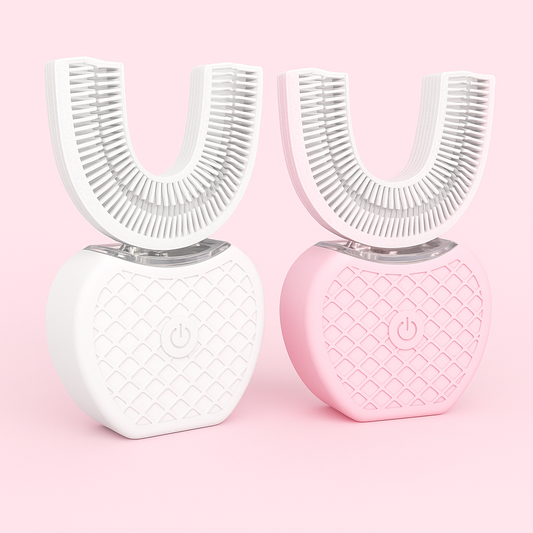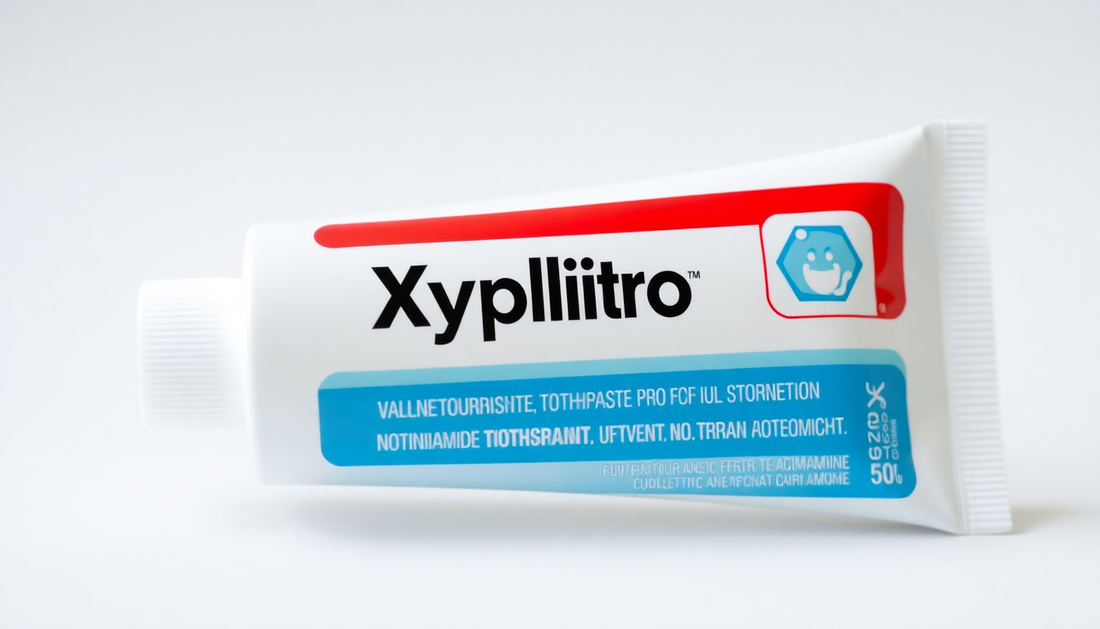Introduction: Why the Future of Oral Care is Microbiome-Forward
Consumers searching for the best toothpaste whitening teeth and alternatives like toothpaste without fluoride are driving a shift in oral care. Today’s savvy shoppers want more than surface-level whitening; they want a toothpaste that supports health teeth, reduces sensitivity, and helps maintain a balanced oral microbiome. Fluoride-free niacinamide + xylitol toothpaste blends modern ingredient science with gentle whitening mechanisms to deliver a comprehensive approach—improving appearance while protecting long-term oral health.
What Causes Tooth Staining and Why Whitening Isn’t Just Cosmetic
Tooth discoloration has multiple causes. Understanding these helps explain why some whitening strategies work better than others:
- Extrinsic stains: Surface staining from coffee, tea, red wine, tobacco, and plaque build-up. These often respond to polishing, mechanical removal, and plaque-reducing ingredients.
- Intrinsic stains: Deeper discoloration from medication, trauma, or developmental changes in enamel and dentin. These may require professional treatments like bleaching or dental procedures.
- Age-related changes: Enamel thins with time, making dentin (which is naturally yellower) more visible.
Targeting extrinsic staining while preserving enamel is key for long-term outcomes—hence the demand for toothpaste that whitens teeth gently while promoting overall oral ecosystem health.
Understanding the Oral Microbiome: Foundation of Health Teeth
The oral microbiome is a complex community of bacteria, fungi, and other microbes living in the mouth. When balanced, it helps protect against pathogens, aids digestion, and keeps oral tissues healthy. Dysbiosis—an imbalance favoring harmful bacteria—contributes to cavities, gum disease, and stronger biofilm formation that traps stains.
Therefore, modern toothpaste strategies focus on microbiome balance: reducing cariogenic organisms like Streptococcus mutans while preserving beneficial commensals. Ingredients such as xylitol, mild antimicrobials, and barrier-supporting nutrients like niacinamide can help guide the community toward a healthier profile.
Xylitol: A Sugar Substitute That Fights Cavities and Stains
Xylitol, a naturally occurring sugar alcohol, is repeatedly identified in searches for toothpaste with xylitol and is a backbone ingredient for many fluoride-free anti-caries strategies. How xylitol helps:
- Antimetabolite effect: Xylitol is not fermentable by many oral pathogens, reducing acid production that leads to demineralization.
- Reduces plaque formation: Regular xylitol exposure can limit biofilm formation, making surface stains easier to remove by brushing.
- Supports remineralization strategies: By lowering acid attacks, xylitol indirectly supports enamel repair when combined with proper oral care.
Clinical studies and long-term population data consistently show fewer cavities in individuals who use xylitol-containing products regularly, making it a strategic addition for anyone seeking toothpaste that whitens teeth and protects enamel.
Niacinamide: Emerging Benefits for Gums, Mucosa, and Microbiome Balance
Niacinamide (vitamin B3) has a track record in dermatology for improving barrier function and reducing inflammation. In oral care, niacinamide toothpaste formulations are being explored for similar benefits:
- Support for soft-tissue health: Niacinamide can help modulate inflammatory responses in gums, improving comfort and reducing redness.
- Barrier reinforcement: Stronger mucosal barriers can resist infiltration by pathogenic microbes and toxins.
- Synergy with antimicrobial strategies: When combined with xylitol and gentle antimicrobials, niacinamide may help steer the oral microbiome toward a healthier balance.
While research is still growing, early consumer studies and pilot trials suggest niacinamide toothpaste can be useful as part of a broader preventive regimen—particularly for those focused on gum health and microbiome balance alongside whitening goals.
Fluoride-Free: Who Benefits and How to Mitigate Tradeoffs
Fluoride remains a cornerstone in cavity prevention. However, many people search specifically for toothpaste without fluoride for reasons ranging from personal preference to medical guidance. If you choose fluoride-free toothpaste, here’s how to make it work:
- Use xylitol: As an anti-caries adjunct, xylitol reduces cariogenic bacteria and supports non-fluoride preventive strategies.
- Maintain professional dental care: More frequent check-ups and topical treatments from your dentist can offset the absence of fluoride in daily toothpaste.
- Pay attention to diet: Limiting fermentable carbohydrates reduces acid attacks and supports enamel health.
- Consider remineralizing formulations: Some fluoride-free toothpastes add calcium phosphates or other agents to support enamel repair.
For children, discuss fluoride needs with a pediatric dentist—topical fluoride is still recommended in many clinical situations to reduce early childhood caries.
Whitening Without Abrasion: Gentle Strategies That Preserve Enamel
Many shoppers look for toothpaste whitening best results without abrasive damage. Abrasive whitening agents can make teeth appear brighter short term but may cause irreversible enamel wear. Safer whitening tactics include:
- Biofilm control: Reducing plaque and staining bacteria with xylitol and regular brushing lowers extrinsic staining.
- Low RDA polishes: Toothpastes with safe Relative Dentin Abrasivity values clean surfaces without excessive wear.
- Optical brighteners: Some formulations include mild refractive agents that enhance perceived whiteness without chemical bleaching.
- Complementary professional care: Periodic professional cleaning and stain removal can be combined with home-use toothpaste for optimal results.
Choosing a toothpaste that whitens teeth through microbiome support and gentle polishing is one of the safest long-term approaches to achieving a whiter smile.
How to Evaluate a Toothpaste: Ingredients, Evidence, and Certifications
When evaluating options—whether you search for good whitening toothpaste, toothpaste whitening best, or niacinamide toothpaste—use this practical checklist:
- Ingredient transparency: Brands should list concentrations where possible and explain the role of key actives like xylitol and niacinamide.
- Clinical evidence: Look for cited studies, clinical trials, or dentist endorsements rather than unsupported claims.
- Abrasivity rating: A safe RDA score (usually below 250 and preferably much lower) helps minimize enamel wear.
- Third-party certifications: Look for ADA acceptance where applicable, as well as cruelty-free, vegan, or organic certifications if those matter to you.
- Customer reviews and longevity: Long-term users can often report whether a toothpaste truly improves whiteness and oral comfort over months.
Daily Routine: How to Use Niacinamide + Xylitol Toothpaste for Best Results
Optimizing outcomes involves technique and consistency:
- Brush twice daily for two minutes with a soft-bristled brush.
- Use gentle, circular motions—avoid scrubbing that can abrade enamel and irritate gums.
- Complement brushing with daily interdental cleaning (floss or interdental brushes).
- Consider xylitol gum or mints after meals if you can’t brush—this prolongs the protective effects of xylitol.
- Expect gradual whitening: Genuine improvement typically occurs over weeks to months as biofilm reduces and enamel is preserved.
Diet, Lifestyle, and Oral Habits That Enhance Whitening and Oral Health
Toothpaste works best alongside other healthy habits. To support whitening and overall tooth health:
- Reduce staining foods and drinks, or rinse/brush soon after consuming them.
- Avoid tobacco entirely; it’s one of the strongest drivers of persistent staining and gum disease.
- Stay hydrated and favor water between meals to reduce acid attacks and promote saliva flow.
- Include chewable xylitol products if approved by your dentist; they can be effective between meals.
Special Considerations: Children, Pets, and Sensitive Teeth
When choosing toothpaste for specific needs, note the following:
- Children: For kids under 6, use a pea-sized amount with supervision. Discuss fluoride needs with a pediatric dentist—some children benefit from fluoride treatments despite parental preferences.
- Pets: Xylitol is highly toxic to dogs. Keep all xylitol-containing toothpaste out of pets’ reach and never give human toothpaste to animals.
- Sensitivity: If you have sensitivity, seek toothpastes formulated to address it. Some niacinamide formulations may reduce soft-tissue inflammation, but desensitizing agents (potassium nitrate, stannous salts) are proven options.
Evidence Snapshot: What the Research Says
Numerous studies support xylitol’s role in reducing caries risk and plaque accumulation. Research on niacinamide in oral care is emerging but encouraging for mucosal health and inflammation modulation. While fluoride remains the most robust single agent for remineralization in large clinical trials, combination strategies—particularly for adults seeking fluoride-free toothpaste options—show promise when they include xylitol and other supportive ingredients.
When evaluating claims about toothpaste whitening best effects, prioritize studies measuring long-term stain reduction, plaque indices, and patient-reported outcomes rather than one-time instant whiteners with high abrasivity.
Comparing Product Types: Fluoride Toothpaste vs Fluoride-Free Niacinamide + Xylitol
Which is right for you may depend on risk profile and goals:
- Fluoride toothpaste: Best for high cavity risk, strong evidence for remineralization, often recommended for children and adults at risk of decay.
- Fluoride-free niacinamide + xylitol: Attractive for adults seeking natural or alternative approaches, focused on microbiome balance, plaque reduction, and gentle whitening.
- Hybrid approach: Some users alternate or use targeted topical fluoride treatments while using fluoride-free daily toothpaste—discuss with your dentist.
How to Spot Marketing Hype Versus Real Benefits
Whitening claims are common, but not all are meaningful. Watch for red flags:
- Unsubstantiated 'instant' whitening claims with no citation of abrasivity or mechanism.
- Lack of ingredient transparency or vague terms like 'clinical strength' without references.
- High-abrasive formulas marketed for rapid whitening—these can damage enamel long-term.
Instead, favor brands that explain how niacinamide, xylitol, and low-abrasivity polishing agents work together to reduce plaque, support health teeth, and improve surface whiteness safely over time.
SEO-Friendly Shopping: Keywords and Search Tips
To find products aligned with these goals, use search queries like:
- "toothpaste with xylitol and niacinamide"
- "toothpaste without fluoride for adults"
- "good whitening toothpaste safe for enamel"
- "best toothpaste for whiter teeth without peroxide"
Compare top results for ingredient lists, customer reviews, and clinical evidence. Look for phrases that match user intent like "treatment for teeth sensitivity" or "toothpaste whitening best"—these often point to pages optimized with relevant product data and user feedback.
Real-World Results: What Users Report
Long-term users of niacinamide + xylitol toothpaste typically report:
- Reduced plaque and fresher breath over weeks of use.
- Gradual lightening of surface stains, especially when coupled with dietary changes and regular flossing.
- Improved gum comfort in some cases—likely due to niacinamide's anti-inflammatory properties.
As with any preventive product, individual results vary. Consistent use, technique, and adjunctive oral care determine outcomes.
Practical FAQ
- Q: Is niacinamide toothpaste safe for daily use? A: Generally yes for most adults. Check with your dentist if you have conditions like oral lichen planus or are using prescription topical agents.
- Q: How quickly will I see whitening? A: Expect gradual improvement—usually several weeks to months for visible stain reduction.
- Q: Can I use xylitol toothpaste if I have crowns or veneers? A: Yes—xylitol affects bacteria, not restorations. But stains on restorative materials may require professional polishing.
- Q: Is xylitol safe? A: Yes for humans, but toxic to dogs—store toothpaste securely out of pet reach.
How to Integrate This Toothpaste Into a Complete Oral Care Regimen
Consider combining niacinamide + xylitol toothpaste with:
- Regular dental check-ups and professional prophylaxis.
- Fluoride varnish or in-office treatments if you are at high risk for cavities (discuss with your dentist if you prefer fluoride-free daily toothpaste).
- Interdental cleaning and mouthwash as advised by your care provider.
Choosing Brands: What to Expect from Quality Manufacturers
Top-quality brands that produce toothpaste with xylitol and niacinamide typically provide:
- Clear ingredient panels and explanations for each active.
- Information about RDA and clinical testing where available.
- Customer support and guidance for specific oral care needs.
Conclusion: A Balanced Path to Brighter, Healthier Teeth
Fluoride-free niacinamide + xylitol toothpaste offers a modern, microbiome-aware path to whitening and overall oral health. By focusing on plaque reduction, mucosal support, and enamel preservation, these formulations can deliver meaningful stain reduction while supporting health teeth. They are particularly appealing for adults seeking toothpaste without fluoride that still prioritizes preventive outcomes.
If you're ready to try a targeted formulation that combines whitening with microbiome care, explore thoughtfully formulated options from reputable brands. For a curated selection of niacinamide toothpaste, toothpaste with xylitol, and fluoride-free whitening solutions, consider shopping trusted collections that emphasize ingredient science and user safety. Discover a range of products optimized for gradual whitening and better oral health at best toothpaste for whiter teeth.
Want an easy place to start? Havana Body offers formulations designed around niacinamide and xylitol to support whitening and microbiome balance. Browse their toothpaste without fluoride and toothpaste with xylitol selections and find the right routine for your smile at Havana Body. Ready to upgrade your oral care? Visit https://havanabody.com to shop their niacinamide toothpaste and whitening solutions—start your journey to healthier, brighter teeth today.


